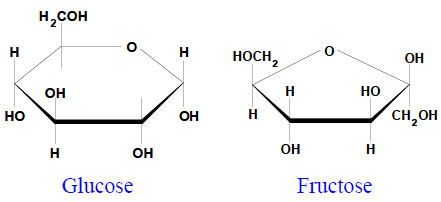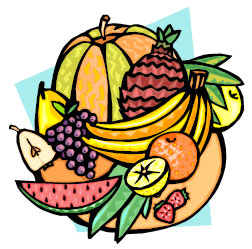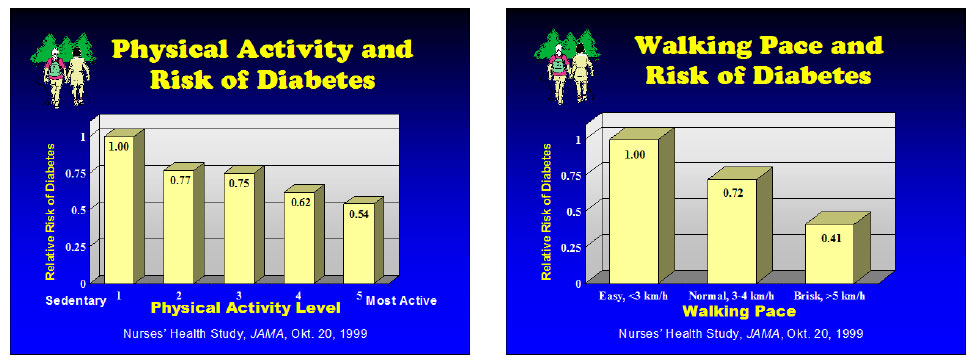CHAPTER 7
WHAT YOU SHOULD KNOW ABOUT DIABETES
The name “diabetes mellitus” comes from the Greek and means “excessive sweet water excretion.” That happens when diabetes is not being treated. When people wanted to say that they are diabetic, they often said “I have sugar”. As a result from this thinking it was believed that diabetics should not eat anything containing sugars, that means carbohydrates, including sweets, fruits and starchy foods. Based on this concept doctors recommended eating predominantly meat and dairy products. This was exactly wrong counsel! Today we understand better the real patophysiology of this disease and can give better advice.
What is Diabetes?
First it must be clarified that there are two types of diabetes. Type I (one) is a congenital defect in the production of insulin by the pancreas and needs insulin substitution. We will not talk about this here. Type II (two) depends on the lifestyle and appears at later age. Because of the progressively worse lifestyle the onset of type II is becoming earlier in life.
There are some false believes among the public about this disease: 
- Diabetes is just a too high blood sugar level. By lowering this level with insulin or other medication everything will be o.k.
- People get diabetes because it is in their genes.
- Once a person gets diabetes it is for the rest of the life and will require permanent medication.
Here are the truths:
Diabetes is a complex metabolic disorder with serious consequences. Because it is mostly asymptomatic in the beginning, people only become aware of it as a result of a blood analysis for some other reason.
- Some people have a hereditary tendency to diabetes but the lifestyle factor is necessary for its expression. Diabetes type II is one of the chronic lifestyle diseases that can be prevented. As the World Health Organization states:
“These chronic diseases (coronary heart disease, certain cancers, hypertension, and diabetes) are, in part, manifestations of nutrient excesses and imbalances in the »affluent« diet, so they are in principle, largely preventable.” (Diet, Nutrition, and the Prevention of Chronic Diseases, WHO, 1990, p. 14) - Diabetes type II can be reversed, and this is the good news! If the disease is too advanced the regression may not be complete but a good lifestyle program, that includes good nutrition, exercise and weight control usually helps to minimize the need for medication.
- Diabetes damages the small arteries of the body with serious consequences:
- Life expectancy is shortened by 5-10 years
- 2-12 x higher risk for heart disease
- 2-4 x higher risk for stroke
- Number one cause of blindness in adults
- Greater susceptibility for infections
- Some of the final complications of uncontrolled diabetes are the following:

Carbohydrates
Carbohydrates are the most abundant organic compounds found in nature. They are produced by green plants through photosynthesis. The name refers to their chemical formula containing carbon and water.
The carbohydrate group is basically subdivided into simple or oligosaccharides (sugars) and complex or polysaccharides (starch, dextrin, cellulose).
 The most important simple sugars are glucose (=dextrose), fructose (=laevulose), and sucrose (ordinary cane or beet sugar). Glucose and fructose are monosaccharides, each of them containing 6 atoms of carbon according to their simple formula C6H12O6. However, their geometrical structure is quite different and so are their behavior and function. Glucose and fructose are found in all fruits and in honey. They provide fast energy because they don’t need digestion.
The most important simple sugars are glucose (=dextrose), fructose (=laevulose), and sucrose (ordinary cane or beet sugar). Glucose and fructose are monosaccharides, each of them containing 6 atoms of carbon according to their simple formula C6H12O6. However, their geometrical structure is quite different and so are their behavior and function. Glucose and fructose are found in all fruits and in honey. They provide fast energy because they don’t need digestion.
When two monosaccharide molecules join together with the elimination of a molecule of water, yield a disaccharide, of which the most important is sucrose (ordinary cane or beet sugar). Lactose and maltose are also disaccharides. Honey is a mixture of glucose, laevulose, some sucrose and minor quantities of minerals and vitamins.
Polysaccharides are complex carbohydrates that have enormous molecules made up of hundreds of monosaccharide units. There are several types of polysaccharides or complex carbohydrates.
The starches are found mainly in cereals (wheat, oats, rye, rice, corn, etc.) and tubers (potato, sweet potato, cassava, etc.). Starches are important because the digestive process releases the individual glucose molecules progressively over several hours, thus avoiding a sudden raise of the blood sugar level. This contributes to maintain the blood sugar on a more stable level, helping therefore in the management of diabetes.
Glycogen is chemically similar to starch and represents the storage form of glucose in the liver of the animals. It constitutes a reserve of energy that the body can use by transforming it again back to glucose. The small amount of glycogen found in animal foods has little nutritious value.
Dextrines are fragments of starch obtained through the action of heat, acids or enzymes.
Cellulose and lignin – also called fibers – are the main structural elements of the plant cell walls. They are found in the roots, stems, leaves, fruits and outer parts of the cereal grains. White flour and polished rice lost most of their valuable bran. Fibers can not be digested by humans but nevertheless, they play important roles for our health.
Benefits of a high-fiber diet:
improves gastrointestinal function
- reduces serum levels of cholesterol and triglycerides
- lowers high blood pressure
- helps regulation of blood sugar
- reduces insulin requirements
- reduces body weight in the obese
- reduces risk of heart disease
A healthy diet should contain abundant complex carbohydrates (starch and fiber) – up to 70% of the total energy intake – and only a minimum amount of free sugars (sugar, honey, glucose and fructose in isolated form). However, glucose and fructose as they are present in whole fruits are welcome because they are associated with plenty of fiber and other nutrients.
According to an expert group report of the WHO, “The nutrient goals indicate that the health needs of the population are best met by a high-carbohydrate, low-fat diet, rich in starchy foods (e.g., cereals, tubers, and pulses) and including a substantial intake of vegetables and fruit.” (Diet, Nutrition, and the Prevention of Chronic Diseases, WHO, 1990, p. 158)
Glycemic Index
 The glycemic effect of a food is the effect that food has on a person’s blood glucose and insulin response – how fast and how high the blood glucose rises, and how quickly the body responds by bringing it back to normal.
The glycemic effect of a food is the effect that food has on a person’s blood glucose and insulin response – how fast and how high the blood glucose rises, and how quickly the body responds by bringing it back to normal.
Although it is true that simple sugars produce a major surge in blood glucose whereas complex carbohydrates produce a flatter response curve, the overall glycemic effect of a given meal depends on the combination of foods consumed in that meal.
Energy From Food
Basically there are six classes of nutrients:
- Carbohydrates
- Fats
- Proteins
- Vitamins
- Minerals
- Water
During metabolism, the first three classes of nutrients provide energy the body can use. Some of this energy is released as heat, some is transferred into other body compounds (including fat), and some is used as fuel for your activities.
The amount of energy can be measured in calories (or more properly, kilocalories or kcalories). Technically, a calorie is the amount of heat necessary to raise the temperature of 1 g of water 1°C. Food energy is measured in kilocalories (thousands of calories), abbreviated kcalories or kcal. Most people, even nutritionists, speak of these units simply as calories, but on paper they are prefaced by a “k”. People think of “kcalories” as a constituent of foods, but strictly speaking they are only a measure of the energy in foods. Each gram of carbohydrates produces approximately 4 kcalories, of fats 9 kcalories, proteins 4 kcalories, and alcohol 7 kcalories.
Food energy can also be measured in Joules (J). A kilojoule is the amount of energy expended when 1 kg is moved 1 meter by a force of 1 Newton. It is thus a measure of work energy, whereas the kcalorie is a measure of heat energy. Both are metric measures. One kcalorie equals 4.2 kJ. The kilojoule is the international unit of energy, but it is not in popular use yet. For those using kilojoules: 1 g carbohydrate = 17 kJ; 1 g protein = 17 kJ; 1 g fat = 37 kJ; and 1 g alcohol = 29 kJ.
Carbohydrates and Diabetes
The metabolism of sugar is very complex and depends on many factors and relay mechanisms. The following explanation is oversimplified. All living cells in our body need energy to work. This fuel is provided mostly by glucose. When the glucose and its reserves (in the form of glycogen) are used up, then the body will turn to fat and protein. The brain can only utilize glucose.
The blood sugar level must be maintained within a healthy range. When it is too low the brain and muscles cannot function properly; the person will feel weak, faint, and may enter in shock. A too high level also disturbs many functions like in the case of diabetes.

Of course, the cells cannot use up so much glucose so quickly. Some of the excess glucose in the blood will be stored as fat and some may be excreted by the kidneys.
Complex carbohydrates, e.g. starch, must be digested and will release glucose molecules slowly into the bloodstream over a period of several hours (see also “glycemic index” above). This saves the pancreas hard work and avoids too big fluctuations in the blood sugar level with its harmful consequences. In a diabetic person such diet helps to reduce the need for insulin, therefore facilitating the control of the blood sugar level.
“A substantial amount of epidemiological and clinical data indicates that a high intake of plant foods and complex carbohydrates is associated with a reduced risk of several chronic diseases, especially coronary heart disease, certain cancers, hypertension, and diabetes.” (Diet, Nutrition, and the Prevention of Chronic Diseases, WHO, 1990, p. 99)
“Moreover, an increased intake of wholegrain cereals, vegetables and fruits (all rich in fiber) was a feature of the diets associated with a reduced risk of progression of impaired glucose tolerance to type 2 diabetes.” (Diet, Nutrition, and the Prevention of Chronic Diseases, WHO, 2003, p. 75)
 “Diets high in plant foods are associated with a lower incidence of diabetes mellitus. In a large follow-up study of Californian Seventh-day Adventists, the death rate from diabetes mellitus was approximately half that for all whites in the USA. Moreover, within the same group, vegetarians had a substantially lower risk than non-vegetarians of having diabetes as an underlying or contributing cause of death.” (Diet, Nutrition, and the Prevention of Chronic Diseases, WHO, 1990, p. 75)
“Diets high in plant foods are associated with a lower incidence of diabetes mellitus. In a large follow-up study of Californian Seventh-day Adventists, the death rate from diabetes mellitus was approximately half that for all whites in the USA. Moreover, within the same group, vegetarians had a substantially lower risk than non-vegetarians of having diabetes as an underlying or contributing cause of death.” (Diet, Nutrition, and the Prevention of Chronic Diseases, WHO, 1990, p. 75)
Fat and Diabetes
“In observational epidemiological studies, a high saturated fat intake has been associated with a higher risk of impaired glucose tolerance. … Considered in aggregate these findings are deemed to indicate a probable causal link between saturated fatty acids and type 2 diabetes, and a possible causal association between total fat intake and type 2 diabetes.” (Diet, Nutrition, and the Prevention of Chronic Diseases, WHO, 2003, p. 74-75)
Translating these research findings into simple words we would say that a high amount of fat in the diet, especially saturates fats from animal sources, will block the insulin receptors at the cell wall (see figure above).
Exercise and Diabetes
“Longitudinal studies have clearly indicated that increased physical activity reduces the risk of developing type 2 diabetes regardless of the degree of adiposity.” (Diet, Nutrition, and the Prevention of Chronic Diseases, WHO, 2003, p. 74)
Again, in pictorial words we could say that physical activity increases the number of insulin receptors at the cell wall. The following charts show clearly that physical activity reduces the risk for type 2 diabetes and so does also the walking pace.

Weight Control and Diabetes

Quite often, mild type 2 diabetes in overweight people may normalize by merely returning to regular weight. A comprehensive lifestyle improvement program that includes a wholesome vegetarian diet and daily exercise, like the NEWSTART® program (see below), will help to reduce weight without having to suffer.
Summary of recommendations for prevention and management of diabetes
The following recommendations are applicable for both types of diabetes, 1 and 2:
- Maintain body weight within normal limits.
- Moderate or more intensive physical activity (e.g. brisk walking) for one hour or more per day on most days per week
- Abundant complex carbohydrates (50-60% of total energy).
- Minimize simple sugars (< de 3% of total energy).
- Reduce saturated fats (< 10% of total energy). Even less in high risk individuals.
- Abundant fibers through regular consumption of wholegrain cereals, legumes, fruits and vegetables (minimum of 20 g fiber/day).
- Limit the protein intake (12-20% of total energy).
(Diet, Nutrition and the Prevention of Chronic Diseases, WHO, 1990, p. 171 and 172; Diet, Nutrition and the Prevention of Chronic Diseases, WHO, 2003, p. 77)
Medical supervision
Diabetes is a serious disease and must be treated to avoid complications. However, medications should not be changed without medical supervision. There are simple methods to measure the excretion of glucose in the urine that can be done at home. Many patients even control their blood sugar using simple equipment with battery, which can be taken in the handbag when traveling.
Lifestyle Improvement Programs
Of all the common chronic diseases, diabetes is the one that responds best to lifestyle changes. This is what should be done in all cases of diabetes. Even in severe cases needing insulin, lifestyle modifications will help to manage better the disease. Here is what the WHO says:
“It has been demonstrated that improved lifestyles can reduce the risk of progression to diabetes by a striking 58% over 4 years. Other population studies have shown that up to 80% of cases of coronary heart disease, and up to 90% of cases of type 2 diabetes, could potentially be avoided through changing lifestyle factors, and about one-third of cancers could be avoided by eating healthily, maintaining normal weight and exercising throughout life.” (Diet, Nutrition, and the Prevention of Chronic Diseases, WHO, 2003, p. 43-44)
The most effective way to achieve correct lifestyle changes for the prevention or treatment of chronic diseases is to participate as an inpatient in a NEWSTART® program. The program is basically the same for all chronic diseases – total vegetarian diet, walking for exercise, abstinence from alcohol and tobacco, regular resting times, lectures on healthy living, cooking classes, physiotherapy, etc. The program is individually adapted for each patient and supervised by physicians and other medically trained personnel. According to the different institutions and needs of the patient the length of the program may vary from one to four weeks.

Such programs 1) The NEWSTART acronym stands for Nutrition, Exercise, Water, Sunshine, Temperance, Air, Rest, Trust in God.
The NEWSTART® program is copyrighted in the USA by the Weimar Institute, P.O. Box 486, Weimar, CA 95736, U.S.A, phone +1 (530) 637-4111, www.weimar.org
In Europe the copyright lies in the hands of the Clinic La Lignière, La Lignière 5, 1196 Gland, Switzerland, phone +41 (22) 999-6464, www.la-ligniere.ch and the Euro-Africa Division, Schosshaldenstrasse 17, 3006 Bern, Switzerland, phone +41(31)3591515, www.euroafrica.org are best carried out in so called lifestyle centers available in many countries on the world. Information about reversing diabetes can be found at www.reversingdiabetes.org.
Artificial Sweeteners 2) F. Sizer, E. Whitney, Nutrition, Concepts and Controversies, International Thomson Publishing Company, 1997, p. 141-144.
One way that people may attempt to limit their sugar intakes is by using artificial sweeteners or sugar substitutes. These do provide sweetness without sucrose, but people are curious about their safety. One set of alternative sweeteners is the sugar alcohols (mannitol, sorbitol, xylitol, and maltitol), which provide energy in a similar amount as sucrose. They are mainly used in special dietary products for their bulking and sweetening powers.
The artificial sweeteners (cyclamate, saccharin, and aspartame) are supersweet and have the advantage of being calorie-free. But are they safe? All substances may become toxic if high enough doses are consumed.
Cyclamate was once approved but then banned in the United States when it was suspected, but never proved, to cause cancer in rats. In Canada, cyclamate is restricted to use as a tabletop sweetener on the advice of a physician and as a sweetening additive in medicines.
Saccharin is very popular but experiments suggested that it caused bladder tumors. For this reason, products containing saccharine must carry a warning label: “Use of this product may be hazardous to your health. This product contains saccharin, which has been determined to cause cancer in laboratory animals.”
Aspartame, also used under the name Nutrasweet, is found in dozens of products including diet drinks, candies, chewing gum, presweetened cereal, gelatins, baked goods and mixes, and pudding. Aspartame provides 4 calories per gram and a little protein, but because so little is needed it is virtually calorie-free. Because of its content of phenylalanine it should not be used by people with the inherited metabolic disease known as phenylketonuria.
Current evidence indicates that moderate intakes of artificial sweeteners pose no health risks. On the other part, experience has shown that the use of artificial sweeteners usually are not magic bullets to reduce weight because people usually continue to consume plenty of calories in their other meals.
Another product on the market that is rapidly calling attention is derived from the Stevia rebaudiana plant, also called sugarleaf or sweetleaf, with its extracts having up to 300 times the sweetness of sugar. However, health and political controversies have limited stevia’s availability in many countries. In some countries there are still restrictions or it is even banned, while in others it is being used widely, especially in East Asian countries.
For people wanting to reduce their intake of calories we suggest some other options:
- Reduce the consumption of sweet beverages, especially soft drinks, and sweetened foods, like jams, ice cream, cookies, cakes, etc. Average soft drinks contain between 8-12 teaspoons of sugar! Pure water is still the healthiest beverage and fresh fruits provide a valuable amount of nutrients. The taste for sugar can be changed!
- Reduce the consumption of fats overall. Watch for “invisible fats” hidden in fried foods and animal products in general.
- Avoid snacking between meals.
Honey
There is a belief that “white sugar (sucrose) is bad but honey is healthy”. We need to keep in mind that both, sucrose and honey are chemically very similar. Sucrose combines glucose and fructose in one molecule that needs to be digested to separate them, whereas honey contains them already as separate molecules. Both are, in essence, refined foods and should be consumed only in small amounts, mainly for pleasure. The other nutrients in honey are present in such small amounts that they cannot be counted for nutrition.


“Eat honey, my son, for it is good; honey from the comb is sweet to your taste.” (Proverbs 24:13)
“It is not good to eat too much honey, …”
(Proverbs 25:27)
-o-O-o-

References
| ↑1 | The NEWSTART acronym stands for Nutrition, Exercise, Water, Sunshine, Temperance, Air, Rest, Trust in God. The NEWSTART® program is copyrighted in the USA by the Weimar Institute, P.O. Box 486, Weimar, CA 95736, U.S.A, phone +1 (530) 637-4111, www.weimar.org In Europe the copyright lies in the hands of the Clinic La Lignière, La Lignière 5, 1196 Gland, Switzerland, phone +41 (22) 999-6464, www.la-ligniere.ch and the Euro-Africa Division, Schosshaldenstrasse 17, 3006 Bern, Switzerland, phone +41(31)3591515, www.euroafrica.org |
|---|---|
| ↑2 | F. Sizer, E. Whitney, Nutrition, Concepts and Controversies, International Thomson Publishing Company, 1997, p. 141-144. |


 Diabetes is a complex metabolic disorder with serious consequences. Because it is mostly asymptomatic in the beginning, people only become aware of it as a result of a blood analysis for some other reason.
Diabetes is a complex metabolic disorder with serious consequences. Because it is mostly asymptomatic in the beginning, people only become aware of it as a result of a blood analysis for some other reason.  improves gastrointestinal function
improves gastrointestinal function